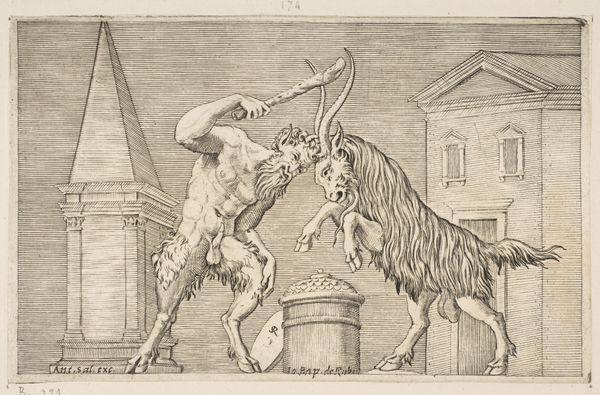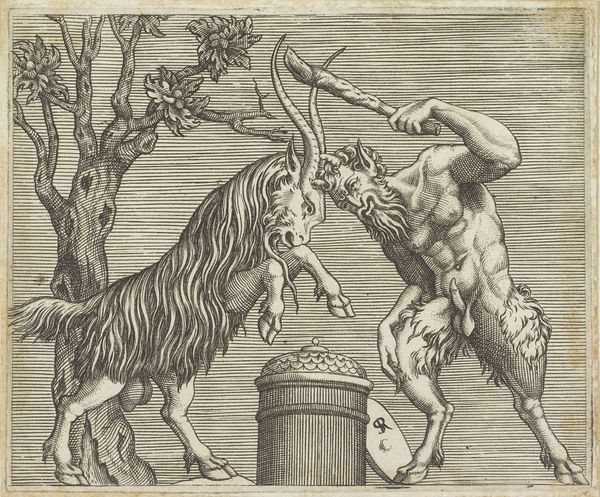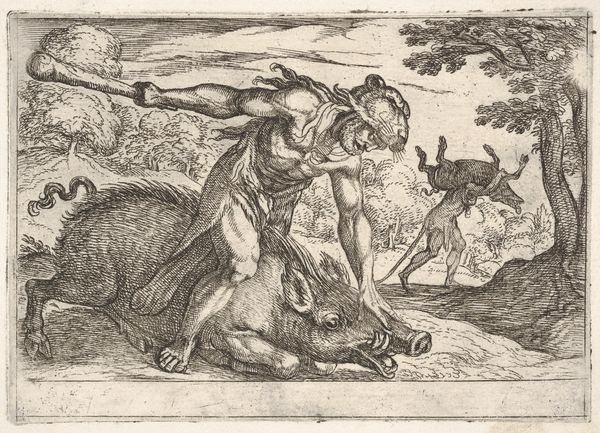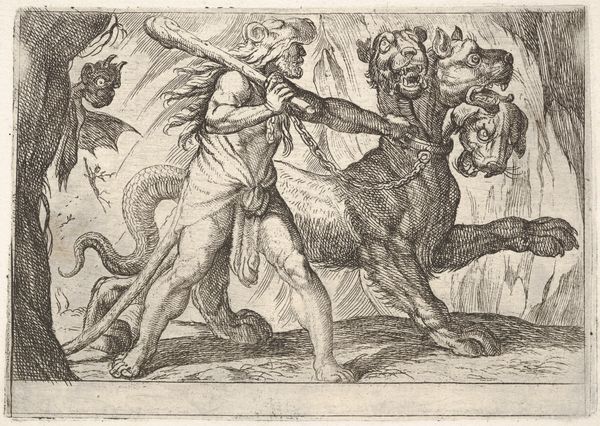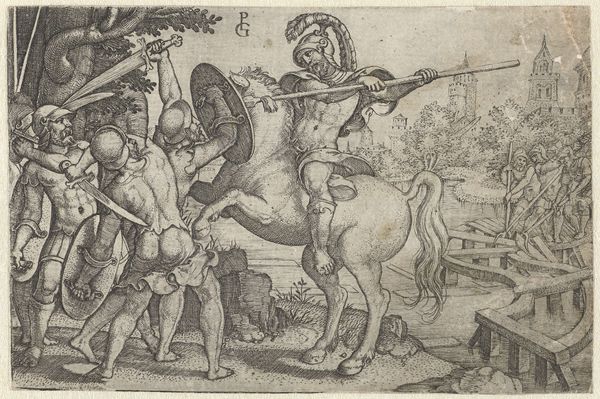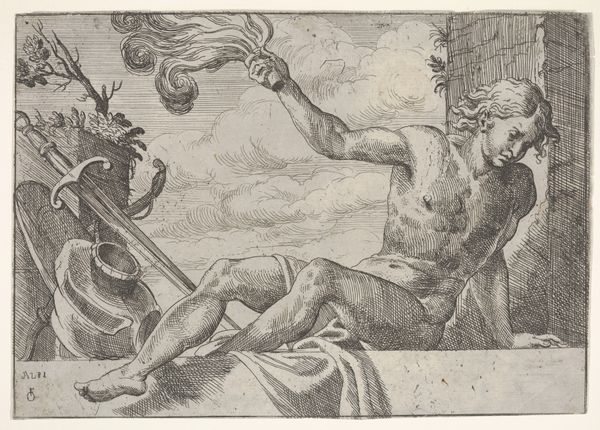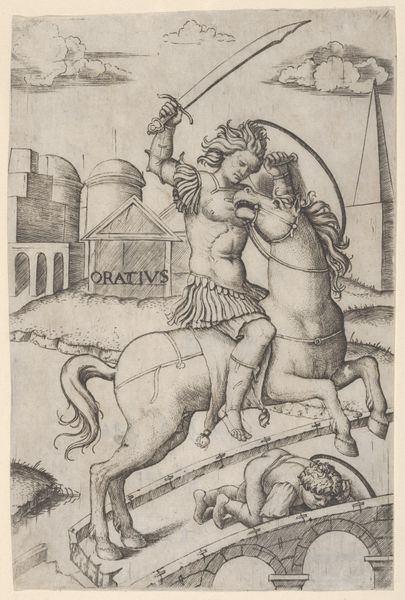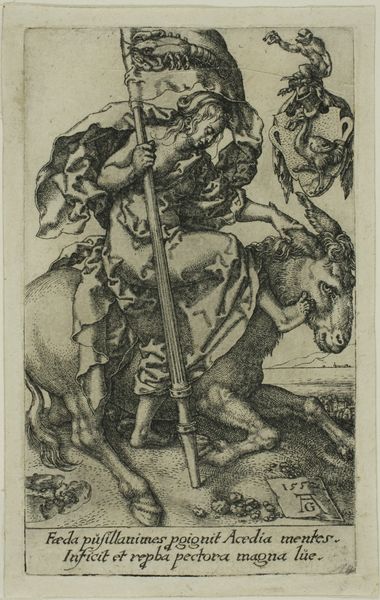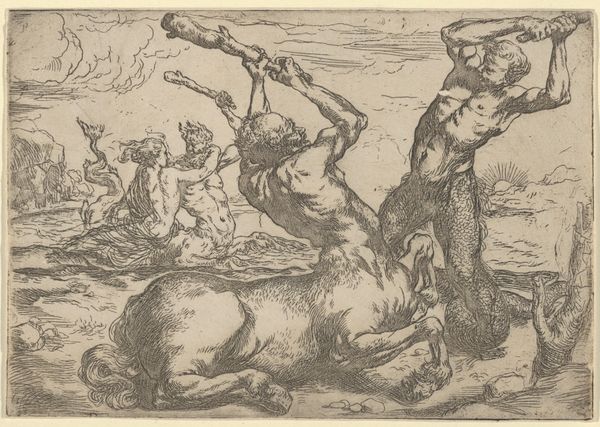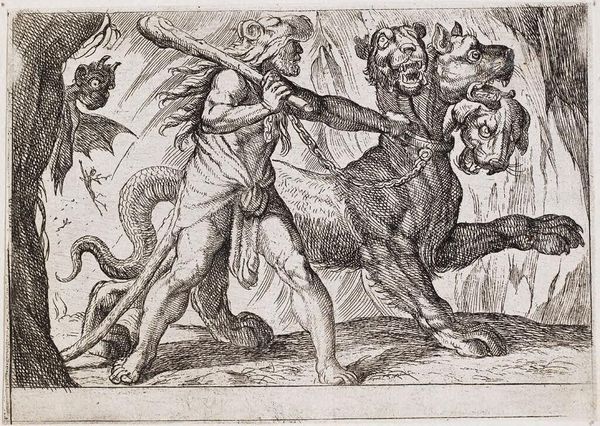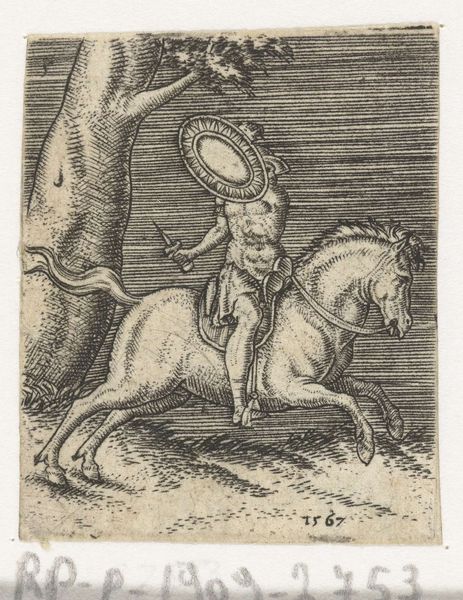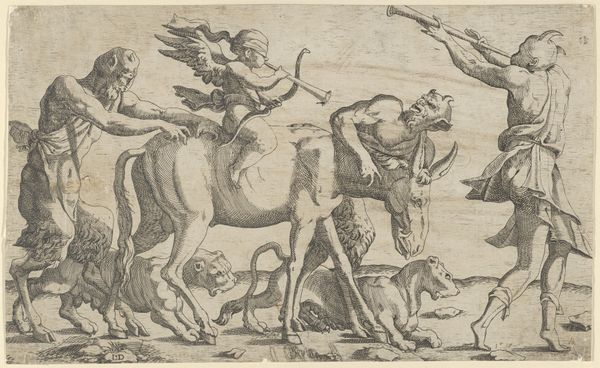
print, engraving
# print
#
landscape
#
figuration
#
line
#
history-painting
#
italian-renaissance
#
engraving
Dimensions: height 105 mm, width 169 mm
Copyright: Rijks Museum: Open Domain
Editor: Here we have an engraving titled "Satyr and Ram in Combat," made between 1498 and 1532 by an anonymous artist. It depicts a violent struggle in a strange setting. What strikes me is how it combines classical elements with something… darker, maybe more primitive? How do you interpret this work? Curator: It’s crucial to understand this image within its socio-historical context. This period saw a resurgence of interest in classical antiquity, but also a deep anxiety about social order. Think about the anxieties around the wild man, the untamed nature versus civilized society. This satyr embodies primal, unrestrained desire, literally battling against domestication as embodied by the ram. What message do you think it's sending? Editor: So, the ram represents civilization? It's interesting to consider the buildings in the background too. They look oddly fragile, almost like stage props, against the raw energy of the combatants. Curator: Exactly. These architectural elements signal aspiration toward the ideals of civilization. The engraving might be understood as a commentary on the fragility of social constructs and the ever-present threat of primal impulses destabilizing social order. This reflects anxieties of that period, as power was shifting and people sought a sense of control through order and control. Who does this narrative empower and who does it disenfranchise? Editor: That gives me a new perspective. I was focusing on the "classical" aspect and missing the underlying power dynamics. Curator: Consider how representations like this might be used to justify social hierarchies or gendered roles. The wild, irrational satyr, unchecked by reason or authority becomes a cautionary figure, reinforcing societal norms through his violent "otherness." How does situating this artwork within intersectional narratives that focus on identity and politics, change your opinion? Editor: That's a powerful point. I’ll never look at a satyr the same way again. Thanks for illuminating those underlying issues. Curator: It's a privilege to collaboratively dissect the layers of social and political significance that works of art may carry. Hopefully, our reflections today equip more visitors to engage with artworks as complex repositories of the beliefs, prejudices, and power dynamics embedded in the society in which they were created.
Comments
No comments
Be the first to comment and join the conversation on the ultimate creative platform.
